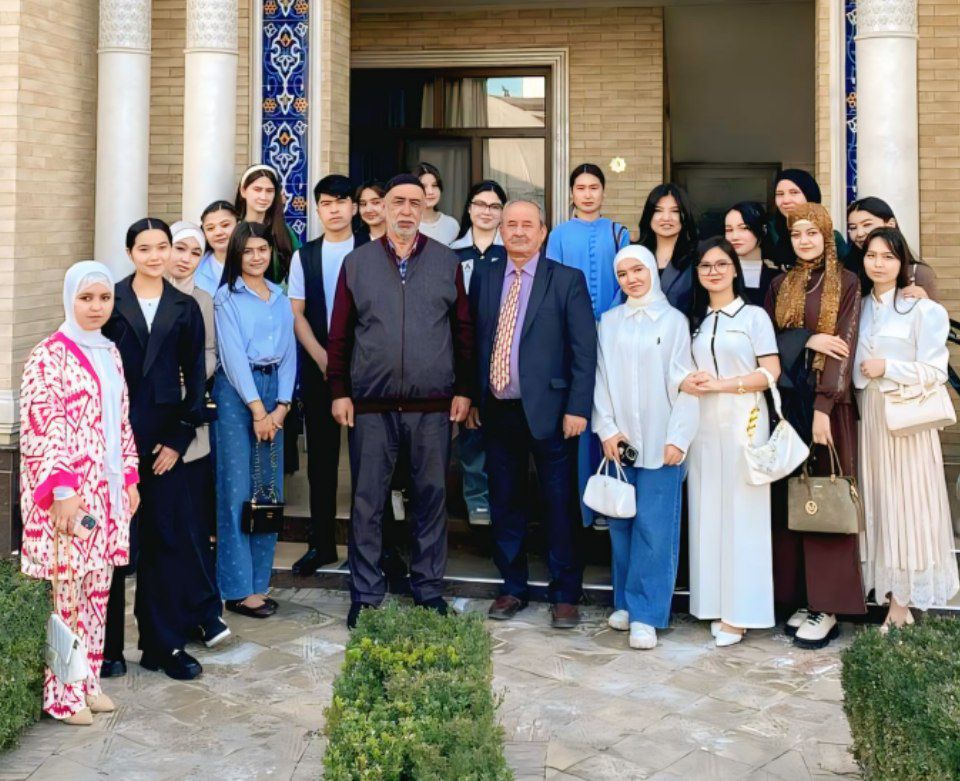
Meeting with History, Creativity, and Culture
Reading books or listening to lectures is not enough to feel history. One must see it, experience it, walk through ancient walls, and observe historical patterns. Today, we had such a unique opportunity. We visited Mirzo Hotel, one of the historic sites in Tashkent, for a practical lesson. This place was not just a modern hotel but a magnificent complex embodying history and culture.
As we stepped into Mirzo Hotel, we felt that it was not just an ordinary hotel but a place infused with a historical atmosphere. We were told about how the hotel was built and what historical patterns were used. Every decoration and pattern reflected Uzbek national traditions, incorporating the wood carving and brickwork artistry of ancient Bukhara and Samarkand.
This place showcases the finest styles of national architecture. The wall patterns and doors resembled the decorations of the Mir Arab Madrasah in Bukhara, the Registan Square in Samarkand, and the Kukeldash Madrasah in Tashkent. The architects combined old traditions with a new style, creating a unique atmosphere.
During the lesson, we also learned interesting facts about the name of Tashkent. Historically, it was called Chach or Shash in ancient sources. Some historians believe that “Chach” meant “city” in ancient Turkic languages, later transforming into “Shash.” Arab sources also referred to Tashkent as “Madina-ush-Shash,” meaning “City of Shash.” The name Tashkent, meaning “stone city,” originated from its historic stone fortresses.
Our visit also provided valuable insights into famous historical figures who lived in the area where Mirzo Hotel is located. Khoja Ahror Vali, Gafur Gulom, Oybek, and Nabi Ganiyev were among them, each leaving a lasting legacy in literature, art, and spirituality.
Khoja Ahror Vali was a great 15th-century Sufi and Islamic scholar who contributed significantly to the development of religious education in the Mawarannahr region.
Gafur Gulom was a prominent writer, best known for his novel “Shum Bola” (The Naughty Boy).
Oybek was a celebrated author whose historical and artistic works, particularly the novel “Navoiy,” remain invaluable in Uzbek literature.
Nabi Ganiyev was a renowned film director who played a key role in advancing Uzbekistan’s film industry.
The neighborhood surrounding Mirzo Hotel also holds great historical significance. It was once known as Gulbozor Mahalla, which Murodjon Mirzayev describes in detail in his book “Tashkent of the Past: Gulbozor Mahalla.” The book depicts life, traditions, architecture, and the daily lifestyle of people in old Tashkent neighborhoods.
The hotel’s management warmly welcomed us and even shared their creative works. Murodjon Mirzayev recited his poetry, enriching our experience. At the end of the practical lesson, we explored the hotel rooms, each with a unique design that harmonized traditional and modern aesthetics.
Finally, we took a group photo as a memorable conclusion to our visit. This was not just an ordinary lesson but a living encounter with history and culture. We once again realized the importance of preserving our ancestors’ rich heritage.
This visit was not just a practical exercise; it was a journey into the ancient spirit of Tashkent. Every stone, every pattern, and every story connected us to our past, reminding us that history is not just written—it is lived.
Nozima G‘ofurova, a 2nd-year student of the Travel Journalism program at the University of Journalism and Mass Communications of Uzbekistan.
